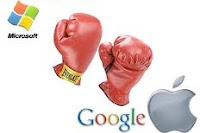Picture this scene. A street in a neighborhood in the United States. All the houses are well taken care of, the grass is cut and trimmed, American flags fly proudly on every home, children play stick ball, hop scotch and ride bikes up and down the street. Neighbors talk to one another and sit on the front porch talking about how great it is to be an American.
That was a long time ago. Today in the United States, people skip a week cutting the grass because gas is too expensive. Instead of American flags, For Sale signs are displayed as people move to avoid ever increasing taxes. Kids don't play outside much preferring to stay indoors playing video games or connecting with friends virtually on the Internet. And neighbors are to busy to talk to one another, having to hold down two or more jobs per household to make ends meet and worrying if their company will fall victim to outsourcing or the economy. This does not sound like the American dream.
 I think America has lost sight of this dream and it's not just because of the economy, it's because people don't have any reason to believe there is an "American dream." For one thing our surroundings don't reflect the dream any longer. It's hard to remember your in the United States of America when most of the clothes you buy say "Made in India" or "Made in China." It's hard to remember your in USA when the only time you hear the National Anthem (aka The Star Spangled Banner) is at a sporting event (and most of the time no one is listening). It's hard to remember your in USA when the Pledge of Allegiance is optional. It's hard to remember your in the USA when the people that defend this country have to foreclose on their homes because they have been out of the country to long. It's hard to remember your in the USA when you haven't heard any of the other songs that remind your of our country (unless it is the 4th of July); like God Bless America, America the Beautiful, This is Your Land and You're a Grand Old Flag. When I was in school we sang many of these songs and the Pledge of Allegiance was not optional.
I think America has lost sight of this dream and it's not just because of the economy, it's because people don't have any reason to believe there is an "American dream." For one thing our surroundings don't reflect the dream any longer. It's hard to remember your in the United States of America when most of the clothes you buy say "Made in India" or "Made in China." It's hard to remember your in USA when the only time you hear the National Anthem (aka The Star Spangled Banner) is at a sporting event (and most of the time no one is listening). It's hard to remember your in USA when the Pledge of Allegiance is optional. It's hard to remember your in the USA when the people that defend this country have to foreclose on their homes because they have been out of the country to long. It's hard to remember your in the USA when you haven't heard any of the other songs that remind your of our country (unless it is the 4th of July); like God Bless America, America the Beautiful, This is Your Land and You're a Grand Old Flag. When I was in school we sang many of these songs and the Pledge of Allegiance was not optional.Now I realize that the world is shrinking and the United States is the "melting pot" of the world, but maybe we have taken it a little too far. Were did our national pride go? Is it out here and I just can't see it? I remember back when there were only a few television channels, the networks signed on in the morning and off late at night. What did they play when they signed on and off, yes folks a patriotic song. They showed pictures of the American flag and scenic views of the United States. Today with 24 hour television they never sign off and you never hear patriotic songs.
What has gone wrong when American's have to sell their homes to save their credit scores. What has gone wrong when going to college requires the average graduate to have 5 years of loans in a job market that is not hiring. What has gone wrong when a person has to cut their grocery bill in order to buy gasoline so they can get to work to make money to feed this viscous circle. I will tell you what has gone wrong. We have lost sight of what it is to be an American citizen, that works for a common cause and believes that they can live in a place that is safe and that their kids can achieve greater things than they did.
It all started when the government provided incentives to companies to send jobs oversees. See once people realized that their job was being replaced (outsourced) to some foreign country they lost their faith in the system and the American dream went "poof." When the government provided incentive to innovate new ideas offshore, people in the USA stopped dreaming up new ideas and "poof" no new manufacturing companies in the USA. See the US economy and the people of the US can't survive on dotCom innovation and reality show television winning. We need to fix the foundation; manufacturing products in the United States. We need to consume the products we make here first and export to other countries so that we can pay down out debt. I find it insane that people purchase vegetables from other countries, while local farmers have to export products to other countries in order to survive. The government need to provide incentives to keep jobs and products in the United States not outsource them. Plus companies need to be loyal to their employees and provide incentives to them to do quality work and take pride in their job.
Lastly, we (the United States of America) need to stop being the world police. Yes, we need to protect our interests around the globe and help out our allies. However, do we really need to take the lead in everything. Yes, we have the most powerful and dedicated armed forces in the world. But lets give these outstanding young men and women a break and let some of our allies take the lead and more importantly bear the costs for a change. We spend millions (correction billions) of dollars helping to make peace in the world, yet we will let our own people starve, our education system go down the toilet and our bridge and roads crumble in front of us. Today children are not receiving healthy meals because the government program that they rely on to buy food has run out of money. Local state governments our getting budgets to make ends meet that there affect the very people they are suppose to serve. This does not sound like a place you can live a dream in.
I will end with this mash-up of patriotic songs.
America! America!
God shed his grace on thee
Stand beside her, and guide her
Thru the night with a light from above.
I'm a Yankee Doodle Dandy
A Yankee Doodle, do or die
A real live nephew of my Uncle Sam
Hurrah for the flag of the free!
May it wave as our standard forever
You're a grand old flag,
You're a high flying flag
And forever in peace may you wave.
Off we go into the wild blue yonder,
Climbing high into the sun;
Here they come zooming to meet our thunder,
God Bless America,
Land that I love.
God bless America, My home sweet home.
Contributions
ScoutSongs.com
US History.org






































